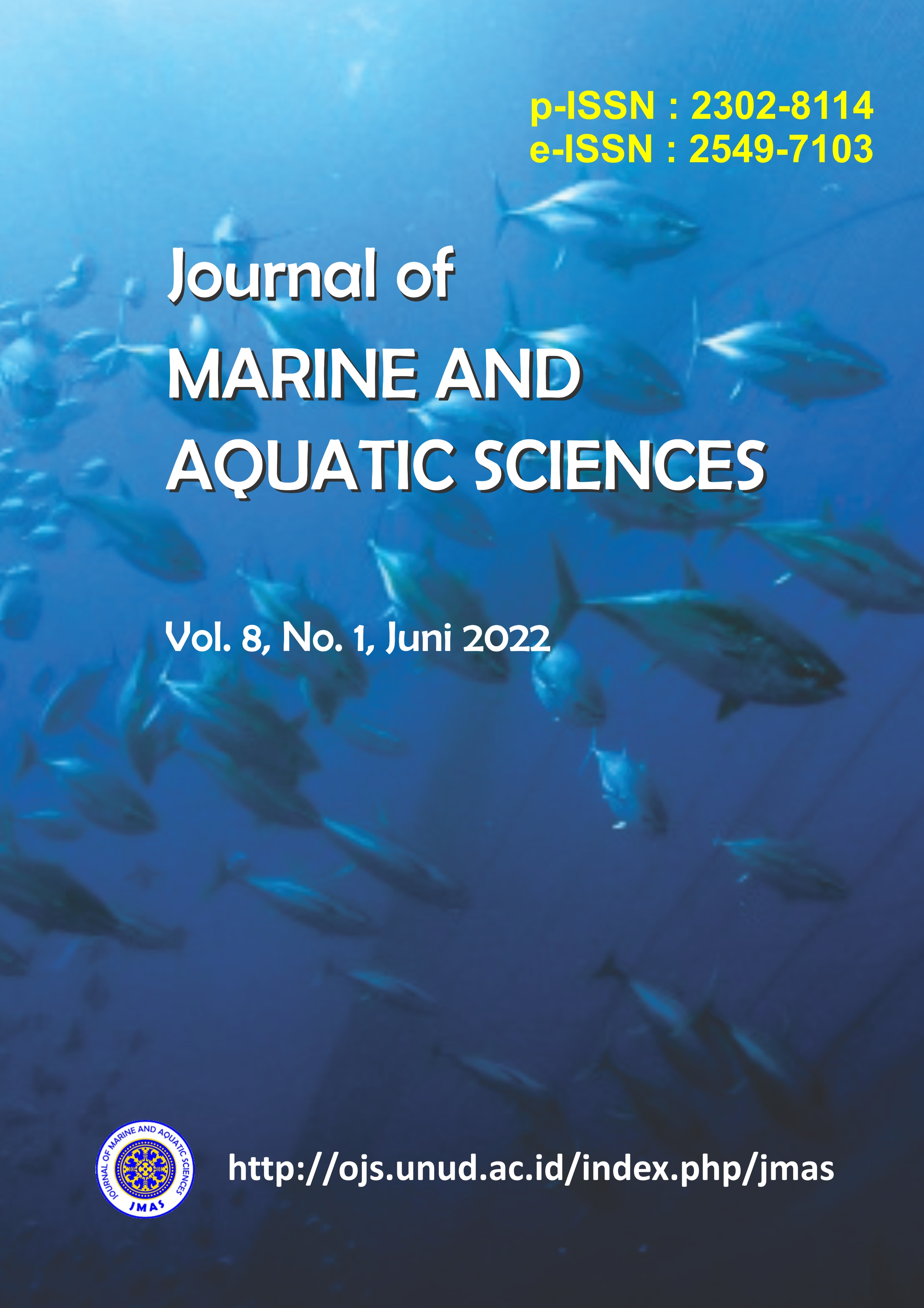Komunitas Bakteri yang Berasosiasi dengan Karang Acropora horrida
Abstract
Symbiotic corals are not only with zooxanthella but also with various microorganism communities, namely bacteria. The presence of bacteria on the reef acts as a nutrient provider for coral animals. One of the adaptations made by corals to environmental changes is by secreting mucus. Mucus provides living space for various types of bacteria. Acropora coral is one of the largest and most extensive coral builders in coral ecosystems, adaptable, and has a fast recovery rate from coral bleaching. The aimed of this study was to determined the bacterial community associated with A. horrida coral mucus. Bacterial identification was based on observations of colony morphological tests and biochemical tests. The results of this study showed that 6 isolates of A. horrida coral mucus bacteria on average have a round shape with a complete border, flat elevation, and white with a smooth texture. The six bacterial isolates showed negative results where there were no bubbles. The oxidase test results showed 3 negatives with no change in color and 3 positives with a change in color to violet. In the gram staining test, there were 2 gram-negative isolates and 4 gram-positive isolates. Characteristics of the six bacterial isolates associated with A. horrida coral mucus identified include the Micrococcaceae, Lactobacillaceae, Clostridiaceae, and Rhizobiaceae families. It was suspected that these bacteria are opportunistic, where the density will increase if there are pollutants into coral reef ecosystems such as organic matter and nitrogen which can increase their growth.
Downloads

This work is licensed under a Creative Commons Attribution 3.0 International License.
Copyright 2012 - 2023 Journal of Marine and Aquatic Sciences (JMAS)
Published by Fakultas Kelautan dan Perikanan Universitas Udayana, Denpasar, Bali, Indonesia
JMAS (p-ISSN 2302-8114; e-ISSN 2549-7103)


